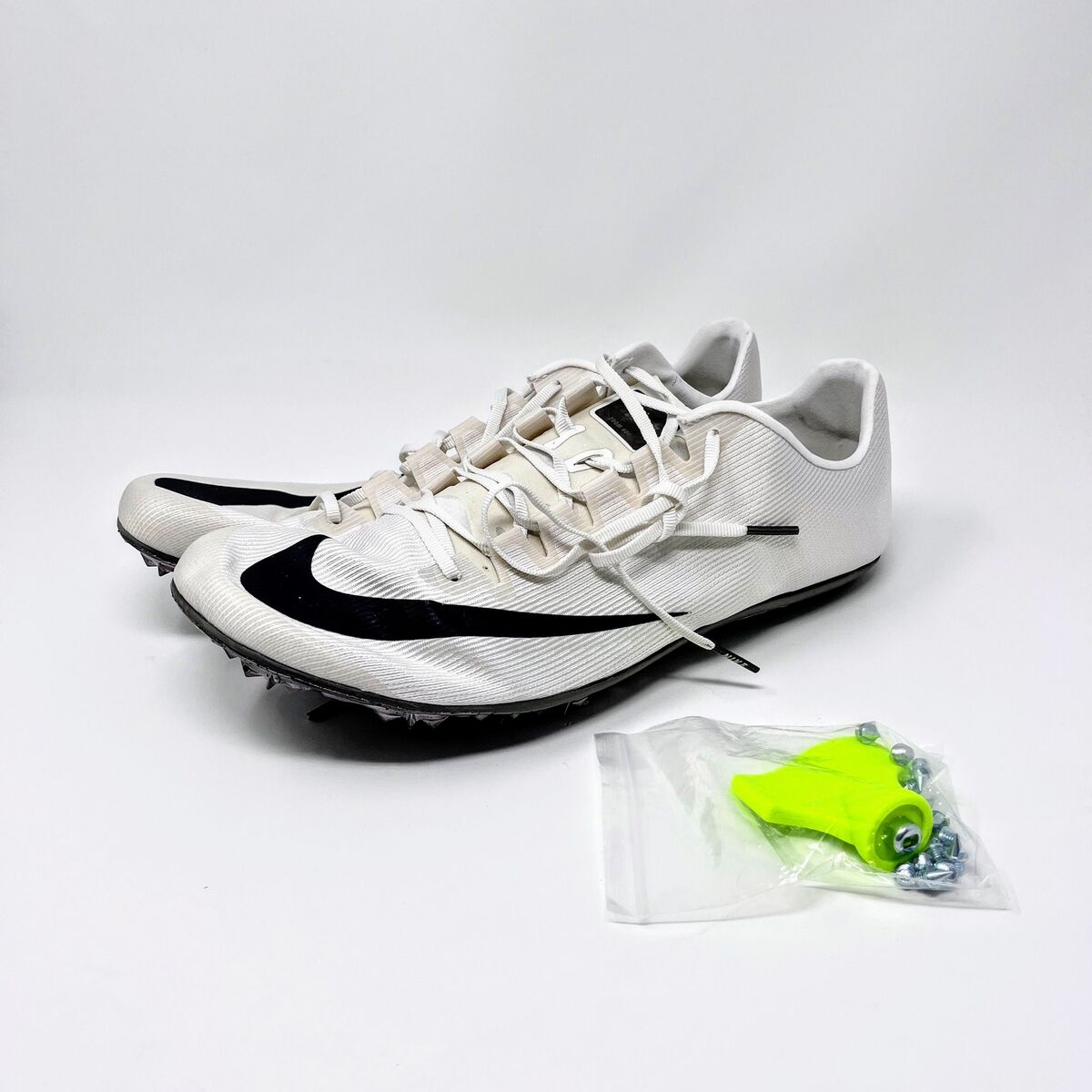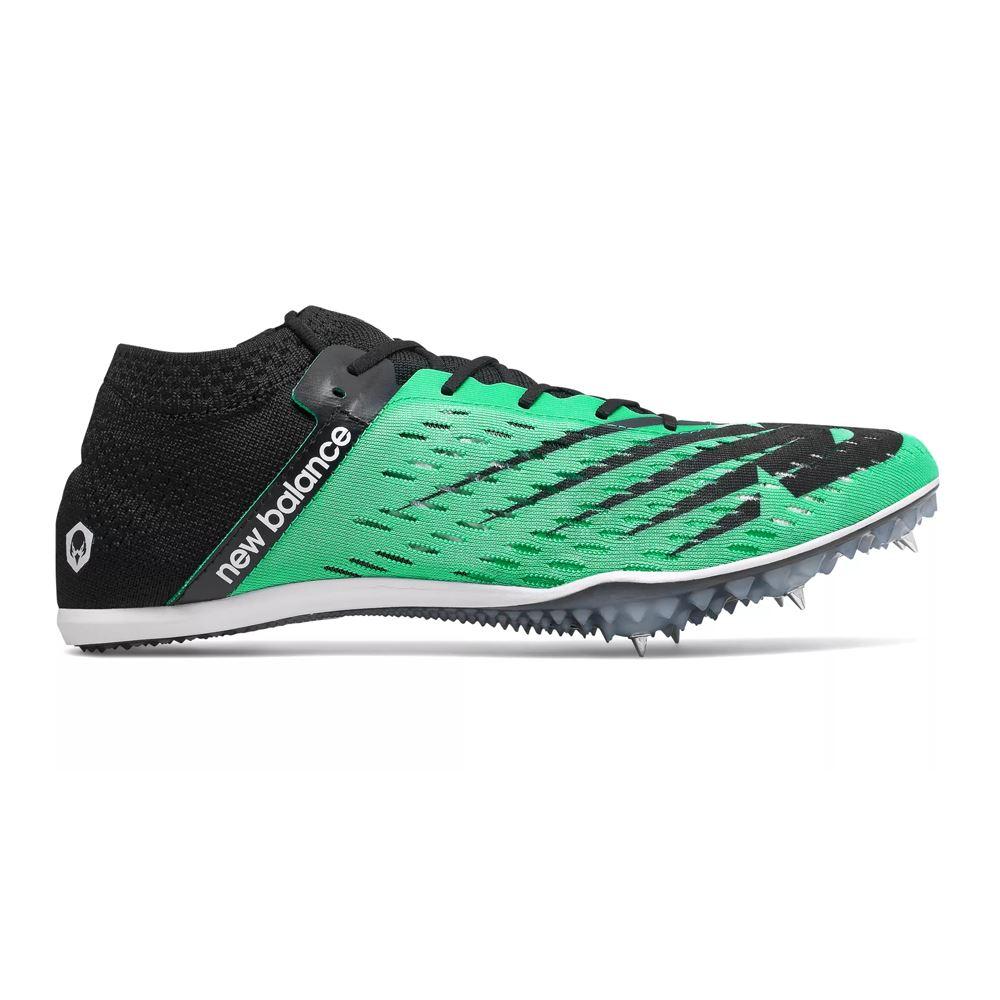Introduction
Track spikes are an essential piece of equipment for any serious track athlete. Designed to provide traction and support, these specialized shoes can make a significant difference in an athlete’s performance. In this comprehensive guide, we will explore everything you need to know about track spikes, from their design and construction to how to choose the right pair for your needs.
Part 1: Understanding Track Spikes
Level 1: What are Track Spikes?
Track spikes are lightweight, high-performance footwear designed for use in track and field events. They feature small, sharp spikes on the sole that grip the track surface, providing traction and stability for the athlete. These shoes are designed to minimize weight and maximize speed, making them ideal for sprinters and distance runners alike.
Level 2: The Anatomy of Track Spikes
Track spikes are typically constructed with a minimal upper for maximum flexibility and breathability. The sole of the shoe features a rigid plate to support the foot and transfer energy efficiently. The most important feature of track spikes is the spike plate, which can be removable or integrated into the sole. Spike plates are made of lightweight materials and feature strategically placed spikes to provide traction while minimizing weight.
Part 2: Choosing the Right Track Spikes
Level 1: Considerations for Different Events
Different track events require different types of spikes. Sprinters, for example, need lightweight, stiff shoes with maximum traction for explosive starts and tight turns. Distance runners, on the other hand, may prefer more cushioning and flexibility for longer races. Field event athletes, such as jumpers and throwers, have their own specific needs as well.
Level 2: Factors to Consider When Choosing Spikes
When choosing track spikes, consider factors such as the type of surface you’ll be competing on, your foot type and pronation, the distance of your event, and any personal preferences or previous injuries. It’s also important to try on several different pairs and test them out on the track before making a final decision.
Part 3: Maintaining and Caring for Track Spikes
Level 1: Cleaning and Storage
Track spikes should be cleaned regularly to remove dirt and debris that can affect their performance. Use a soft brush or cloth to gently scrub the spikes and sole, and allow them to air dry completely before storing. Store track spikes in a cool, dry place away from direct sunlight to prevent the materials from deteriorating.
Level 2: Replacing Spikes
Over time, the spikes on track spikes will wear down and lose their effectiveness. It’s important to regularly check the condition of the spikes and replace them as needed. Most track spikes come with a spike wrench for easy removal and replacement. Be sure to use the correct length and type of spikes for your event and track surface.
Part 4: Tips for Wearing Track Spikes
Level 1: Breaking Them In
When you first get a new pair of track spikes, it’s important to break them in gradually to avoid blisters and discomfort. Wear them for shorter runs or workouts before using them in competition to allow the shoes to mold to your feet and ensure a comfortable fit.
Level 2: Using Them in Competition
When wearing track spikes in competition, focus on proper technique and form to maximize their benefits. Use the spikes’ traction to push off the ground efficiently and maintain stability through turns and straightaways. It’s also important to warm up properly and cool down after using track spikes to prevent injury.
Part 5: The Future of Track Spikes
Level 1: Advancements in Technology
As technology continues to evolve, so do track spikes. Manufacturers are constantly developing new materials and designs to improve performance and comfort for athletes. From lightweight, breathable uppers to innovative spike plate configurations, the future of track spikes looks promising.
Level 2: Sustainability and Ethical Considerations
With a growing focus on sustainability and ethical production, the future of track spikes may also include environmentally friendly materials and production methods. As athletes become more conscious of their environmental impact, it’s likely that track spike manufacturers will follow suit.
Part 6: Maintenance and Care of Track Spikes
It is important to properly maintain and care for your track shoes to ensure they remain in good condition and provide the necessary grip and support during races. Here are some tips for maintaining and caring for your track spikes:
- After each use, remove any dirt, mud, or grass from the spikes with a soft brush or cloth. This will help prevent corrosion and rust.
- Store your track shoes in a cool, dry place to prevent the growth of mold and mildew.
- Check the spikes and the spike plate regularly for signs of wear and tear. If the spikes are worn down or the spike plate is damaged, replace them to maintain optimal performance.
- Avoid walking on hard surfaces, such as concrete or asphalt, while wearing your track shoes, as this can dull or damage the spikes.
- Clean the spikes and spike plate with a mild soap and water solution to remove stubborn dirt and debris.
Proper maintenance and care of your track spikes shoes will ensure they last longer and provide the grip and support you need during races.
Part 7: Choosing the Right Track Spikes for Your Event
When it comes to choosing the right track spikes for your event, there are a few factors to consider to ensure you have the best possible performance. Here are some tips for choosing the right track spikes for your event:
- Distance events (800m and up): For longer distance events, such as the 800m, 1500m, or 5000m, consider using mid-distance or distance spikes. These spikes typically have a slightly cushioned midsole to provide added comfort and support over longer distances.
- Sprint events (100m-400m): For sprint events, such as the 100m, 200m, or 400m, choose sprint spikes with a lightweight design and minimal cushioning for maximum speed and traction.
- Hurdles and jumps: If you compete in hurdles or jumps, look for multi-event spikes that provide the stability and support needed for these events, as well as the speed for sprints.
- Field events: For field events such as javelin, shot put, or discus, consider using throwing shoes specifically designed for these events, which provide the necessary traction and support for throwing and landing.
By choosing the right track spikes for your event, you can ensure that you have the best possible performance and comfort during races and competitions.
Part 8: The Importance of Proper Fit for Track Spikes
The proper fit of track shoes is crucial for optimal performance and comfort during races and competitions. Here are some considerations for achieving the perfect fit with your track spikes:
- Size: It is important to choose track shoes that are the right size for your feet. Spikes that are too small can cause discomfort and blisters, while spikes that are too large can cause instability and affect your performance.
- Width: Consider the width of your feet when choosing track shoes. It’s important to find spikes that accommodate the width of your feet to prevent discomfort and potential injury.
- Comfort: Look for track shoes that provide a snug and comfortable fit, with minimal movement or slippage. This will help prevent blisters and discomfort during races and competitions.
- Support: Choose track shoes that provide adequate support for your feet, particularly in the midfoot and heel areas. This will help reduce the risk of injury and provide stability during races.
- Flexibility: Look for track shoes that allow for natural foot movement and flexibility, particularly in the forefoot area. This will help you maintain proper form and technique during races.
By ensuring the proper fit of your track spikes, you can maximize your performance and comfort during races and competitions, ultimately leading to better results.
Part 9: The Importance of Proper Care for Track Spikes
Proper care and maintenance of your track spikes are essential to ensure they perform at their best and have a longer lifespan. Here are some tips for caring for your track shoes:
- Clean your track shoes after every use: After each race or training session, make sure to clean your track spikes. Use a soft brush to remove any dirt or debris from the spikes and the upper part of the shoe. This will prevent any buildup of dirt and grime, which can affect the performance of the spikes.
- Allow your track spikes to dry properly: After cleaning your track spikes, make sure to let them dry completely before storing them. Do not leave them in a damp environment or in direct sunlight, as this can affect the materials and structure of the spikes.
- Store your track shoes properly: When not in use, store your track spikes in a cool, dry place. Avoid leaving them in extreme temperatures or in a place where they can be crushed or damaged.
- Replace worn spikes: Over time, the spikes on your track shoes will wear down. It is important to regularly check the condition of your spikes and replace them when necessary. Worn spikes can affect your grip and traction on the track, so make sure to keep them in good condition.
- Avoid wearing track shoes on hard surfaces: Track shoes are designed for use on track surfaces and are not suitable for use on hard surfaces like concrete or asphalt. Wearing your spikes on these surfaces can cause unnecessary wear and tear and affect their performance.
By following these tips for caring for your track spikes shoes, you can ensure that they perform at their best and have a longer lifespan. Proper care and maintenance will also help you get the most out of your investment in track shoes, allowing you to perform to the best of your ability on the track.
Conclusion
Track spikes are a crucial piece of equipment for track and field athletes, providing the traction and support needed for optimal performance. By understanding the different types of track shoes, how to choose the right pair, and how to maintain and wear them properly, athletes can maximize their potential on the track. As technology continues to advance, the future of track shoes looks promising, with a focus on performance, sustainability, and ethics.





